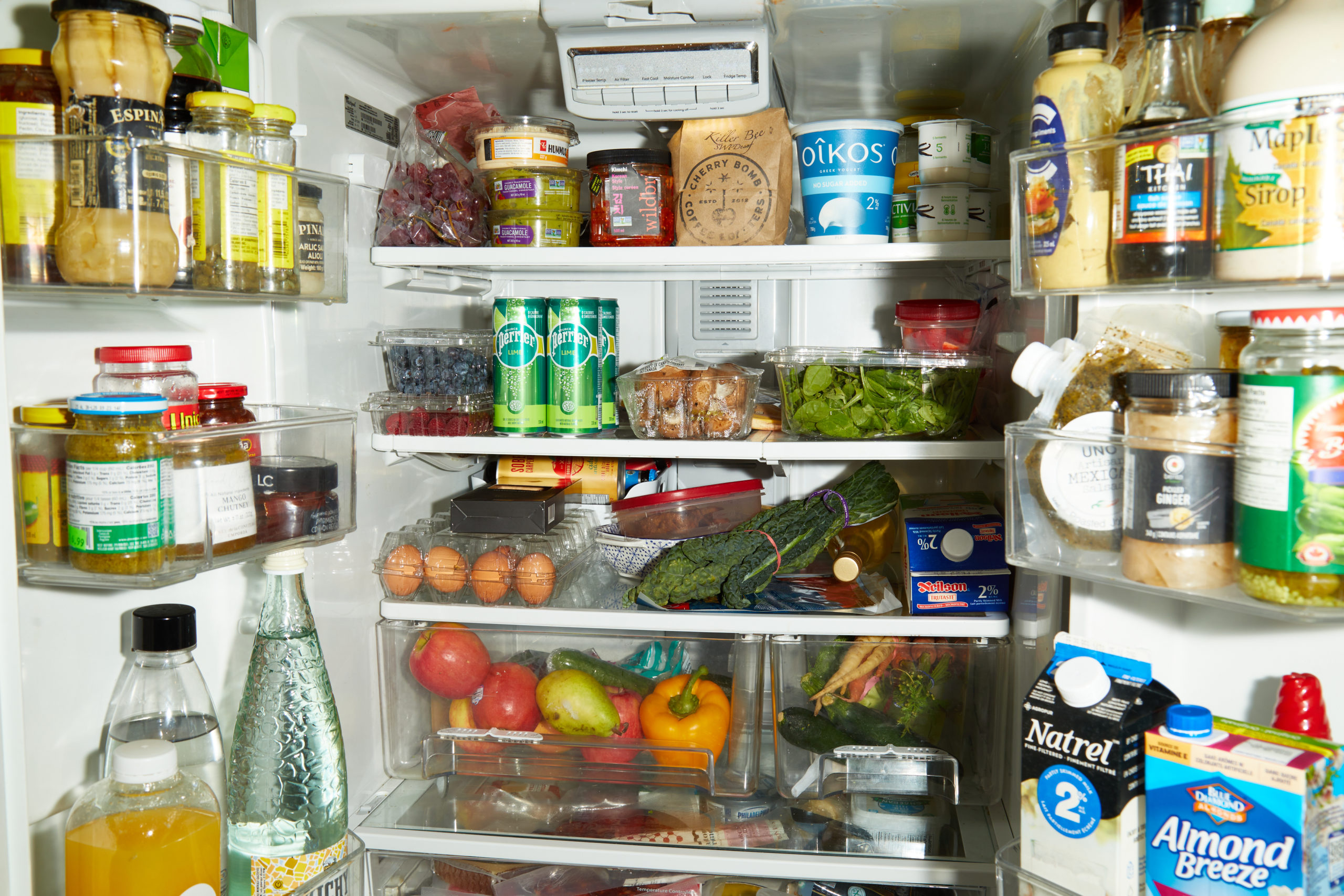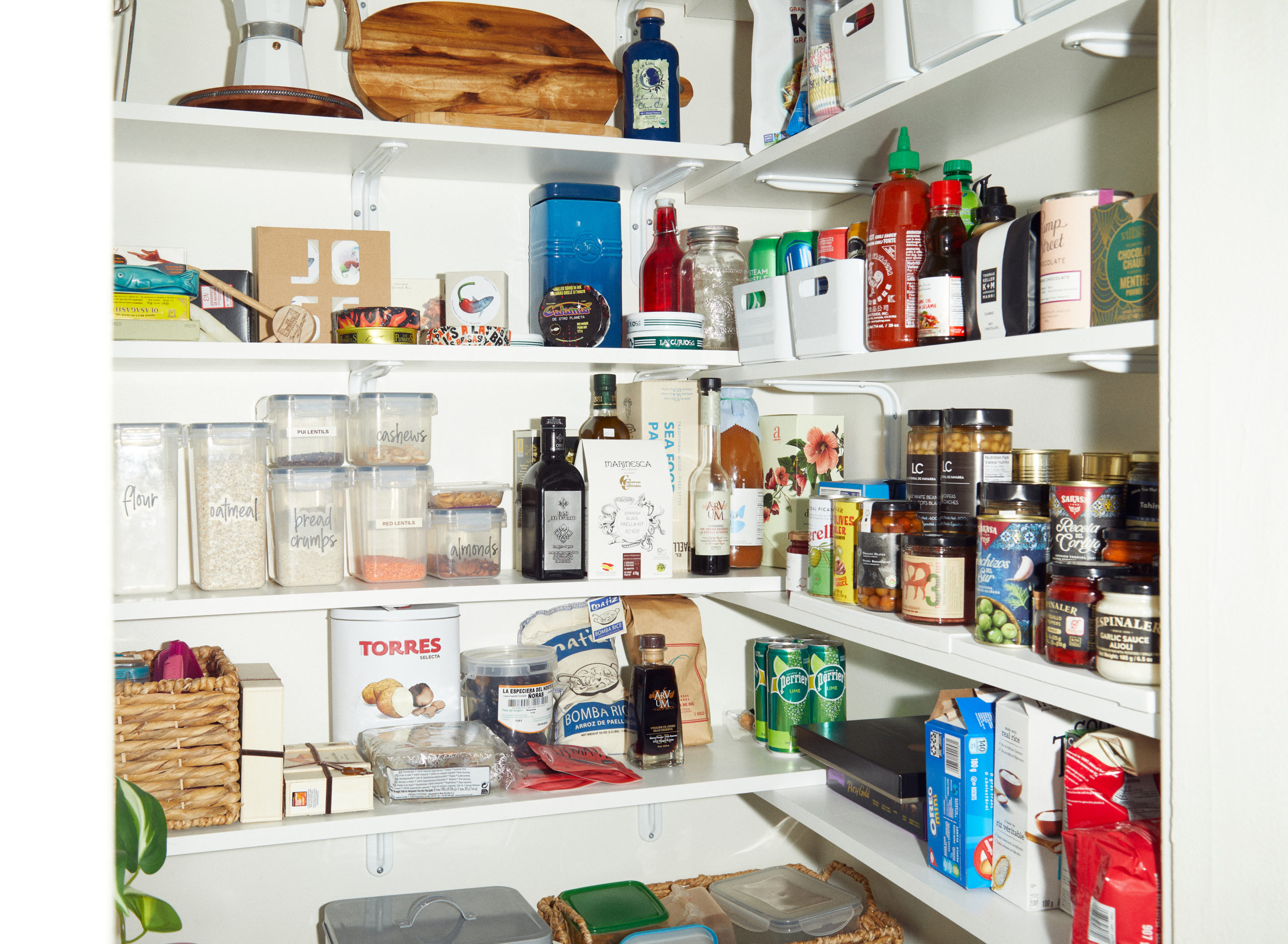Inside the kitchen of Jonathan Larrad, the owner of Spanish Pig
Stocked with anchovy-stuffed olives, tinned razor clams and an eclectic cookbook collection

In 1995, Jonathan Larrad, the owner of Spanish Pig and Tinmonger, moved from Madrid to London in search of better job prospects—but he found the local English cuisine sorely lacking. To satisfy his cravings for Iberian classics, he had to learn to cook on a shoestring budget. “As I started getting better jobs, though, the ingredients got posher,” he says. Eventually he could frequent high-end butchers and vendors in London’s Kensington Market, and the upscaling ignited an interest in gourmet cooking. Over time, his dinner parties became the highlights of his friends’ social calendars.
Related: Inside the kitchen of Peter Sanagan, the owner of Sanagan’s Meat Locker
When Larrad moved to Toronto in 2009 with his partner, Leonie Tait, he wasn’t impressed by the city’s Spanish grocery selection. He noticed that importers were bringing in Iberian charcuterie and other treats, but they were selling them only to restaurants. So in 2018, to get his hands on top quality jamón while making some extra cash, he launched an online business called Spanish Pig that sold goods imported from Spain.

It was just a fun side gig at first, but the increase in online shopping during the pandemic led to a major uptick in orders. So Larrad quit his corporate job to focus on retail full-time. In 2022, he and Tait launched a second online shop, Tinmonger, which specializes in high-quality canned seafood. A year after that, Larrad opened Spanish Pig, his first brick-and-mortar operation, on Roncesvalles.
The family’s fridge is stocked with coffee from the couple’s favourite café (Cherry Bomb), Catalan sparkling water, kimchi, freshly squeezed orange juice and white asparagus. They mainly shop at stores along Roncy, supplementing their local finds with the occasional Costco trip. Go-to spots in their neighbourhood include Ko Fruit Market for fresh and organic produce, Rowe Farms for meats, Anchor Fresh Fish Market for seafood, the Thin Blue Line for cheeses from France and Ontario, Alimentari for what Larrad considers the city’s best tiramisu, and Sunnyside Provisions for British chocolates and ready-made meals.

Their home-cooked dinners tend to be simple. The rotation includes Spanish tortilla, chickpea stew with chorizo, and steak with pesto and veggies. When they do go out to eat, typically a couple of times a month, the family usually heads to Defina Pizzeria, Spaccio West or Barque BBQ (11-year-old Estela’s favourite). Larrad and Tait have also been impressed by La Banane and Florette as date-night spots. Since opening a Spanish specialty shop, Larrad finds he seldom craves other Iberian food, but if he had to recommend a Catalonian spot in town, it would be Bar Isabel.
Related: Inside the kitchen of Michael Hunter, the chef and co-owner of Antler
Larrad devotes way more pantry space to gourmet goodies than to staple ingredients like flour and sugar. There are half a dozen different types of olives, plus guindilla peppers, multiple olive oils, award-winning canned bivalves, sherry vinegars, truffle chips and Spanish nougat.


Larrad doesn’t typically cook with olives because he finds they overpower most dishes. His collection is primarily for straight-up snacking. He likes to keep a range of flavour profiles on hand, from the bitter and meaty Hechizos del Surs to piquant Perello Gordals packed in a spicy guindilla brine. His daughter, Estela, loves anchovy-stuffed olives.

In this household, there’s always a selection of sherry vinegars (Larrad prefers these to balsamic) and olive oils. His favourite olive oil is by Farga Millennial, made using the olives of trees so ancient they predate Beowulf. Harvested by hand at night, they’re pressed and bottled in near darkness. While the story is captivating, it’s the balanced flavour that Larrad appreciates the most. He reserves it as a finishing oil for soups, tapas and salads—never for greasing up a pan.

“We usually stock about 10 cans of tinned seafood,” Larrad says. “They have a long shelf life and are incredibly versatile.” Go-to seafood meals include canned tuna belly with pesto poured over freshly boiled pasta and salads with tinned mackerel. However, his preferred way to savour sea-cuterie is straight-up. He also has razor clams, grilled mussels in escabeche, scallops in a garlic-guindilla sauce and Cantabrian anchovies, which he describes as buttery.

Sometimes, Larrad gets emails from customers asking if the prices listed on his website are for a case rather than a single tin of seafood. Take razor clams, for example, which are $40 per can. “The quality of canned seafood varies widely,” Larrad says. “Razor clams can be sandy and chewy.” Comparatively, the ones Larrad prefers are hand-harvested in the Finisterre region of Spain—not too chewy, not too soft—and preserved in a garlic and olive oil sauce. Larrad enjoys these by warming them in a bain-marie, then serving them with a slice of Blackbird baguette and a glass of Albariño.
For nights when the couple is reluctant to choose between meat and seafood, they have Mojama de Isla Cristina. “It’s a cured and dried tuna fish loin that’s referred to as the ham of the sea,” says Larrad. He serves it thinly sliced and drizzled with olive oil and Marcona almonds.

Larrad and Tait have simplified their dinner parties, a choice that was influenced by their retail venture and a hint of post-pandemic fatigue. Now, they often feature less-labour-intensive food, like montaditos (open-faced sandwiches, a cornerstone of Spanish tapas).
They’ve also developed the perfect charcuterie board: a balance of sweet spreads (quince, mango chutney, piquillo pepper jam with licorice), a selection of Spanish cured meats, and a mix of cheeses and olives for varied textures and flavors. Manchego is a staple for its versatility, often paired with more distinctive cheeses that add depth, like Monte Enbro. Their choice of meats extends beyond chorizo, morcilla and salchichón to include various cuts of jamón, such as shoulder and leg from a five-year-aged pig. Larrad says that Joselito’s cured Iberian ham is among the finest available.

Larrad’s cookbook collection—which comprises just a few of his favourite titles—reflects his diverse culinary interests. He’s got Tin to Table (innovative canned seafood recipes), Culinaria Spain (an exploration of Spain’s culinary traditions), Rick Stein’s Spain (a travelogue with the celebrity) and Bruce’s Cookbook (a compilation from the Michelin-starred London restaurant Chez Bruce).

Lately, Larrad has developed a taste for negronis, boulevardiers and manhattans. He stocks his bar with bitters and premium vermouths. His current favourite is Atamán, which is crafted using Manzanillas from the historic Angioletti and El Toro wineries. For wine, he heads to Bossanova, his favourite bottle shop—both for selection and proximity. His seasonal preferences vary: GSM blends in the winter and bright whites like Albariño in the summer. And, every once in a while, he’ll enjoy a glass of very dry sherry.






